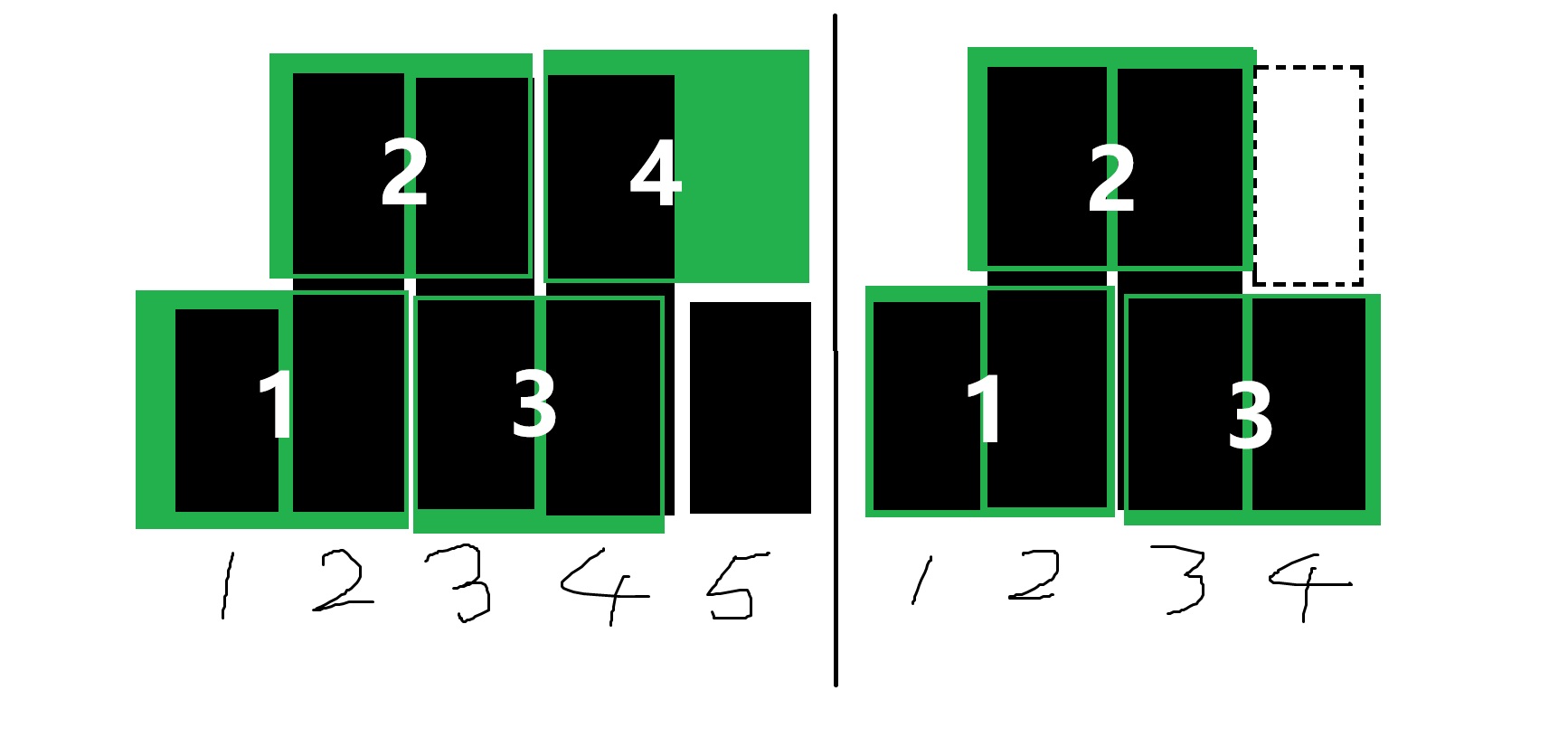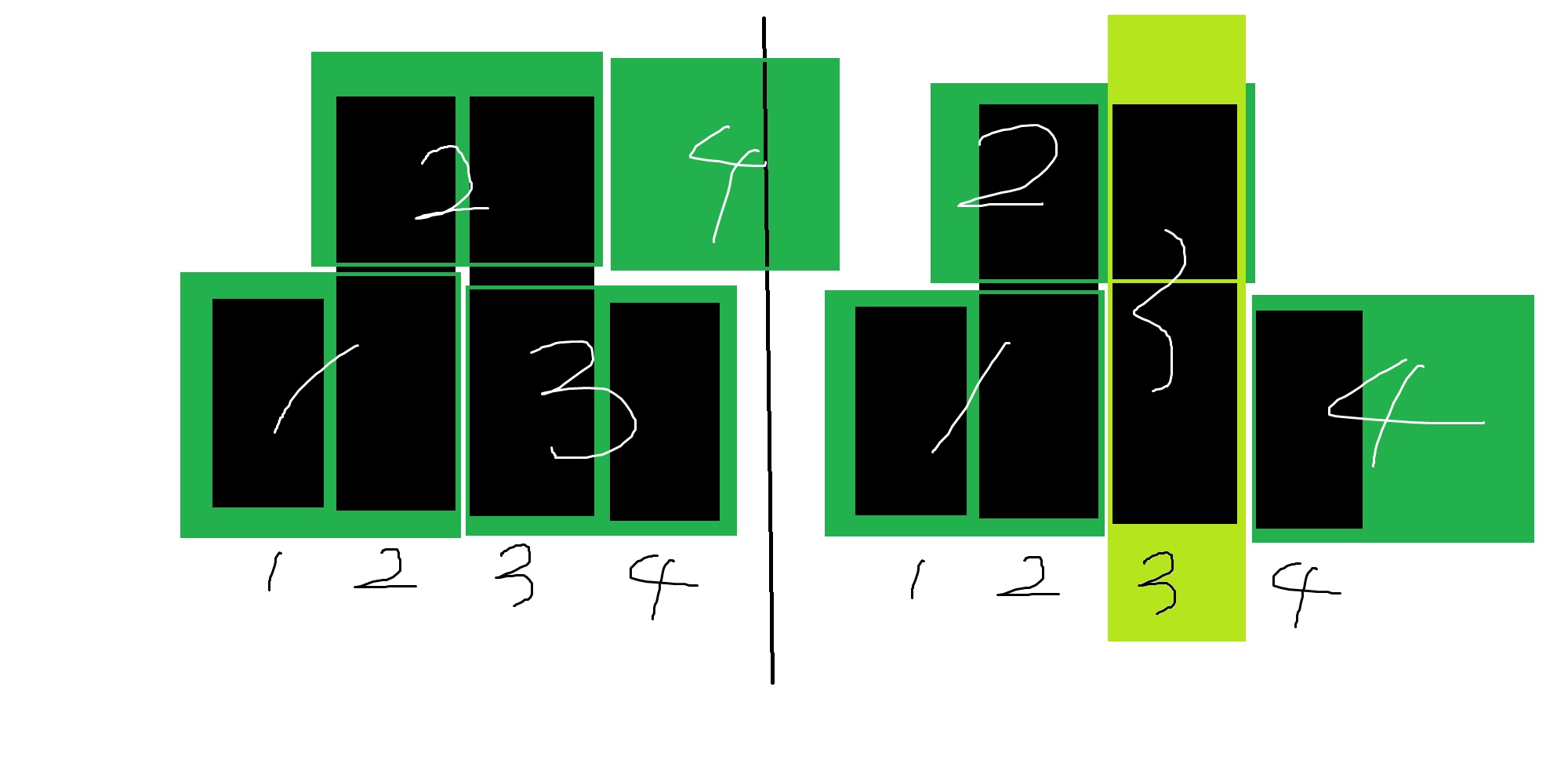题解:Codeforces Round 960 (Div. 2) D
D. Grid Puzzle
time limit per test: 2 seconds
memory limit per test: 256 megabytes
input: standard input
output: standard output
You are given an array
There is an
You can do the following operations any number of times in any order:
- Dye a
- Dye a whole row white. Note you can not dye a whole column white.
Find the minimum number of operations to dye all cells white.
给你一个大小为
其中有一个
您可以按照任意顺序多次进行以下操作:
- 将一个
- 将整行染白。注意不能将整列染白。
找出将所有单元格染白的最少操作次数。
Input
The first line contains an integer
For each test case:
- The first line contains an integer
- The second line contains
It's guaranteed that the sum of
输入
第一行包含一个整数
对于每个测试用例
- 第一行包含一个整数
- 第二行包含
保证所有测试用例中
Output
For each test case, output a single integer — the minimum number of operations to dye all cells white.
输出
对于每个测试用例,输出一个整数 —— 将所有单元格染白的最少操作次数。
Example
input
10 1 0 4 2 4 4 2 4 3 2 1 0 3 0 3 0 3 0 1 3 3 3 1 0 4 3 1 0 3 4 0 2 2 2 6 1 3 4 2 0 4 8 2 2 5 2 3 4 2 4
output
0 3 2 1 2 2 3 2 4 6
Note
In the first test case, you don't need to do any operation.
In the second test case, you can do:
- Dye
- Dye
- Dye
It can be proven
In the third test case, you can do:
- Dye the first row white;
- Dye
It can be proven
注
在第一个测试案例中,您不需要进行任何操作。
在第二个测试用例中,您可以进行以下操作:
- 染
- 染
- 染
可以证明
在第三个测试案例中,你可以这样做:
- 将第一行染成白色;
- 将
可以证明
我的题解
提示!以下文字仅代表我的想法
如果有更优的做法欢迎交流讨论
这题是很典型的贪心吧
首先,如果满足消除
其次,我们来处理剩下的块
假设全部用

我们先用一个变量
再用一个变量
全部初始化为
我们对第
- 假如
- 假如上一块的黑块数量是
- 假如上一块的黑块数量是
- 假如上一块的黑块数量是
- 如果
- 假如
-
假如
-
假如
-
假如

-
假如
-
-
- 假如
- 假如
- 假如
退出循环后再处理一下mem就好了。
我的代码
#include <bits/stdc++.h> #define int long long const int N = 1e7 + 10; int t; int a[N]; void solve() { int sum = 0; int mem = 0; int last = 0; int n; std::cin >> n; for(int i = 0 ; i < n ; i ++) { std::cin >> a[i]; if(a[i] > 4) { sum ++; a[i] = 0; } } for(int i = 0 ; i < n ; i ++) { if(a[i] == 0) { if(mem) { if(last <= 2 && mem & 1) sum += std::max(mem -1,(int)1); else sum += mem; } mem = 0; } else if(a[i] <= 2) { if(mem) { sum += mem; mem = (mem & 1 ? 0 : 1); } else mem ++; } else { if(mem) mem ++; else sum ++; } last = a[i]; } if(mem) { if(last > 2 || !(mem & 1)) sum += mem; else sum += std::max(mem - 1,(int)1); } std::cout << sum << "\n"; } signed main() { std::cin >> t; while(t--) { solve(); } return 0; }
posted on 2024-07-21 14:22 Jiejiejiang 阅读(163) 评论(0) 编辑 收藏 举报




【推荐】国内首个AI IDE,深度理解中文开发场景,立即下载体验Trae
【推荐】编程新体验,更懂你的AI,立即体验豆包MarsCode编程助手
【推荐】抖音旗下AI助手豆包,你的智能百科全书,全免费不限次数
【推荐】轻量又高性能的 SSH 工具 IShell:AI 加持,快人一步
· 从 HTTP 原因短语缺失研究 HTTP/2 和 HTTP/3 的设计差异
· AI与.NET技术实操系列:向量存储与相似性搜索在 .NET 中的实现
· 基于Microsoft.Extensions.AI核心库实现RAG应用
· Linux系列:如何用heaptrack跟踪.NET程序的非托管内存泄露
· 开发者必知的日志记录最佳实践
· winform 绘制太阳,地球,月球 运作规律
· TypeScript + Deepseek 打造卜卦网站:技术与玄学的结合
· Manus的开源复刻OpenManus初探
· 写一个简单的SQL生成工具
· AI 智能体引爆开源社区「GitHub 热点速览」